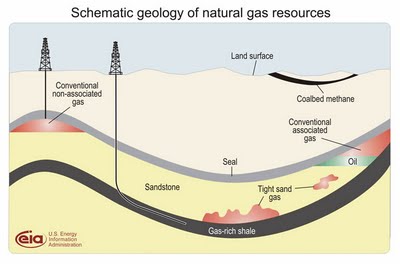Ending Blackouts and Bailouts in Energy-Rich Pakistan
By Riaz Haq
CA
Frequent IMF bailouts and power blackouts in energy-rich Pakistan are closely tied. One of the key reasons for recurring balance-of-payment crises is the country's rapidly rising oil import bill. The lack of sufficient fuel exacerbates load-shedding, negatively impacts economy, reduces tax revenue growth and worsens current account and budget deficits. This requires repeated injections of IMF loans in US dollars to meet import requirements and deal with budget shortfalls.
Pakistan's Untapped Energy Riches
1. Shale Oil:
A recent US EIA report released in June 2013 estimates Pakistan's total shale oil reserves at 227 billion barrels of which 9.1 billion barrels are technically recoverable with today's technology. In fact, US EIA (Energy Information Administration) puts Pakistan among the top ten countries by recoverable shale oil reserves. These include Russia (75 billion barrels), United States (58 billion barrels), China (32 billion barrels), Argentina (27 billion barrels), Libya (26 billion barrels), Venezuela (13 billion barrels), Mexico (13 billion barrels), Pakistan (9.1 billion barrels), Canada (8.8 billion barrels) and Indonesia (7.9 billion barrels).
2. Shale Gas
The latest US EIA report has raised estimates of Pakistan's recoverable shale gas reserves from 51 trillion cubic feet to 105 trillion cubic feet. It says Pakistan has 586 trillion cubic feet of shale gas of which 105 trillion cubic feet (up from 51 trillion cubic feet reported in 2011) is technically recoverable with current technology.

3. Tight Gas
Rough estimates indicate the presence of at least 33 trillion cubic feet of unconventional gas reserves trapped in tight sands, according to an ENI Pakistan report . Another report by Shahab Alam , technical director of Pakistan Petroleum Concessions, puts the estimate at 40 trillion cubic feet of tight gas reserves in the country. These unconventional gas reserves are in addition to the remaining conventional proven gas reserves of over 30 trillion cubic feet.
4. Conventional Gas
In addition to unconventional oil and gas resources, Pakistan also has about 30 trillion cubic feet of remaining conventional natural gas.
5. Thar Coal
Pakistan's coal reserves in the Thar desert are estimated at 175 billion tons, according to Geological Survey of Pakistan . It has low BTU content coal. The carbon content of Thar lignite is around 60-80%; the rest is composed of water, air, hydrogen, and sulfur. It's hard to transport it but it can be used to generate electricity in an integrated mining-generation facility.
6. Hydro
Pakistan's hydroelectric potential is over 100,000 MW of electricity of which 59,000 MW can come from currently identified sites by the nation's Water and Power Development Authority (WAPDA) .
7. Wind
According to data published by Miriam Katz of Environmental Peace Review, Pakistan is fortunate to have something many other countries do not, which is high wind speeds near major centers. Near Islamabad, the wind speed is anywhere from 6.2 to 7.4 meters per second (between 13.8 and 16.5 miles per hour). Near Karachi, the range is between 6.2 and 6.9 (between 13.8 and 15.4 miles per hour). In only the Balochistan and Sindh provinces, sufficient wind exists to power every coastal village in the country. There also exists a corridor between Gharo and Keti Bandar that alone could produce between 40,000 and 50,000 megawatts of electricity, says Ms Katz who has studied and written about alternative energy potential in South Asia.
8. Solar
Pakistan is an exceptionally sunny country. If 0.25% of Balochistan was covered with solar panels with an efficiency of 20%, enough electricity would be generated to cover all of Pakistani demand. Solar energy makes much sense for Pakistan for several reasons: firstly, very large population lives in 50,000 villages that are far away from the national grid, according to a report by the Solar Energy Research Center (SERC). Connecting these villages to the national grid would be very costly, thus giving each house a solar panel would be cost-efficient and would empower people both economically and socially.
Summary
Pakistan's frequent bailouts and blackouts are clearly related. The key to solving these interlinked crises is to put high priority on developing the country's vast but untapped domestic energy resources identified above. These include shale oil, shale gas, tight gas, Thar coal, hydro and renewables like solar and wind . Reducing Pakistan's dependence on energy imports is also the key to making the nation less vulnerable to recurring external shocks from energy prices which vary with international, political and economic events and crises.
Back to Pakistanlink Homepage

